In The Mirror and the Light, Hilary Mantel wrote of the ground under the ground, “no longer visible except in the mind’s eye; and down it goes, to the city where the legions of Rome left their ashes beneath the earth, their glass in the soil, their bones in the river”. I have had reason to think about the ground beneath the ground a lot over the past couple of weeks. In the City of London, I found myself in a Roman Temple, left by the legions or Rome; and in Croydon, in an archbishop’s palace, where Thomas Cranmer may have worked on the Book of Common Prayer.
At home I watched Michael Powell and Emeric Pressburger’s A Canterbury Tale (1944), with its themes of listening to the ground beneath our feet to see if we can hear the past. Decades ago, I took my first degree at the University of Kent at Canterbury, and spent the hot summer of my graduation in the villages and woods of Fordwich, Wickhambreaux, Chilham and Chartham, looking for the locations used to create the fictional village of Chillingbourne where most of the film is set. Many of them are still there - “Chillingbourne” Church, Mr Colpeper’s House - and the exterior of the Colpeper Institute, where he lectures:
when you see the bluebells in the spring and the wild thyme, and the broom and the heather, you're only seeing what their eyes saw. You ford the same rivers. The same birds are singing. When you lie flat on your back and rest, and watch the clouds sailing, as I often do, you're so close to those other people, that you can hear the thrumming of the hoofs of their horses, and the sound of the wheels on the road, and their laughter and talk, and the music of the instruments they carried.
All this has led me to reflect on my habit of what I call “Cromwelling” - lurking in places associated with Thomas Cromwell - and listening for echoes, looking for shades. There are places that withhold their secrets; and other, less showy places where the past can be sensed. To my ears anyway. I don’t think I can explain my Cromwelling terribly well, but I am going to try.
I can walk up Chancery Lane and feel Cromwell’s footsteps - although nothing remains of the street he would have walked. I can go to the Tower of London and feel absolutely nothing - the press of visitors, the costumed guides, the noise - it all leaves me cold. No, that’s not quite true. I like the ravens. And I now associate the Tower of London with my lovely friend Julie who visited from Orkney a couple of summers ago, and we had a splendid time together at the Tower, then walked the length of Fenchurch Street where Cromwell once lived.
At Hampton Court, the empty Wolsey Rooms hold echoes of the past in their beautiful stillness, while the Great Hall with its tapestries and ceiling bosses remains silent. I’m always busy looking for stray HAHAs when I am in there rather than being still enough to hear the past.1
Cromwell’s house at Canonbury still stands, but he isn’t in residence these days; while the site of his house at Stepney is completely transformed but I felt something in the ether shift on the site of his old garden. And I left with some sticks that I picked up from the ground where he once walked - even though they came from trees that were planted long after 1540. Perhaps a building that is no longer standing holds more tangible memories than one that still remains but has been altered?
There’s an old wall by the Thames that once belonged to Mortlake Manor but I’m not sure Cromwell’s shade remains there to guard his old bricks. And at the Austin Friars, much of which was destroyed by bombing during the Blitz, you can still peer through gates to see the imprint of Cromwell’s garden, and the Draper’s Hall was once part of his house. I don’t feel anything there - other than intense interest - but just outside, I think that one of the surrounding streets corresponds with the footprint of the site of his first house in the Austin Friars. That’s where I’m more likely to feel something.
I’m after hints of the past. I suppose my imagination is easier to conjure without layers of interpretation. To be clear, I like to look at objects and have them explained. I like good exhibitions. I am a museum enthusiast. I enjoy seeing artefacts in sympathetic surroundings. But if I want to get into a more imaginative “between place”, I’m happier with traces rather than anything too solid. A faint dotted line, rather than an outline inked in.
I don’t think I fully realised this until my visit to the Temple of Mithras at the Bloomberg Space in the City of London a couple of weeks ago. I had actually gone there to see an incredible textile exhibition by Jonathan Baldock but when I arrived, I realised the exhibition was at the same site as the Mithraeum, and the nice staff encouraged me to visit both.
Now, I remember seeing the Temple of Mithras open to the elements some years ago in a different place in the City. I thought my memory was playing tricks but I checked and I was right: after its excavation, the Temple was relocated while the area was being redeveloped. And then, after further redevelopment, the remains of the Temple were returned to their original location and reconstructed. My brain can’t quite get to grips with the movement of the remains of a temple - or indeed what I think about the “rightness” of such a relocation and recreation, but the current site is very well put together. And when you go down, down, down, into the Temple, there’s a rather effective installation of sound and image that attempts to recreate what the worship of Mithras might have entailed. It’s very well presented - but I preferred looking at the reconstructed site once the installation was over and the lights were back on.
So I will carry on looking for traces of places in my ongoing Cromwelling. And the feelings these slight and faint traces evoke will work their way into my stitched work, one way or another.
HAHAs are the decorative initials of Henry and Anne Boleyn that once adorned buildings and interiors. Most were removed after Anne’s execution - but a few remain. There are a couple on the wooden screen as you enter the Great Hall at Hampton Court, and, I believe, one in the roof, that I have never been able to spot.

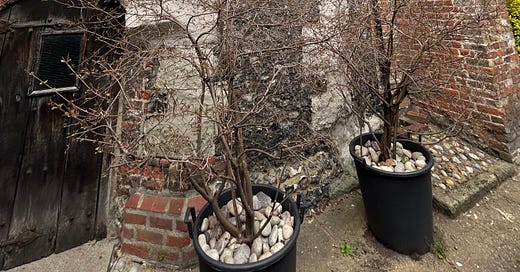



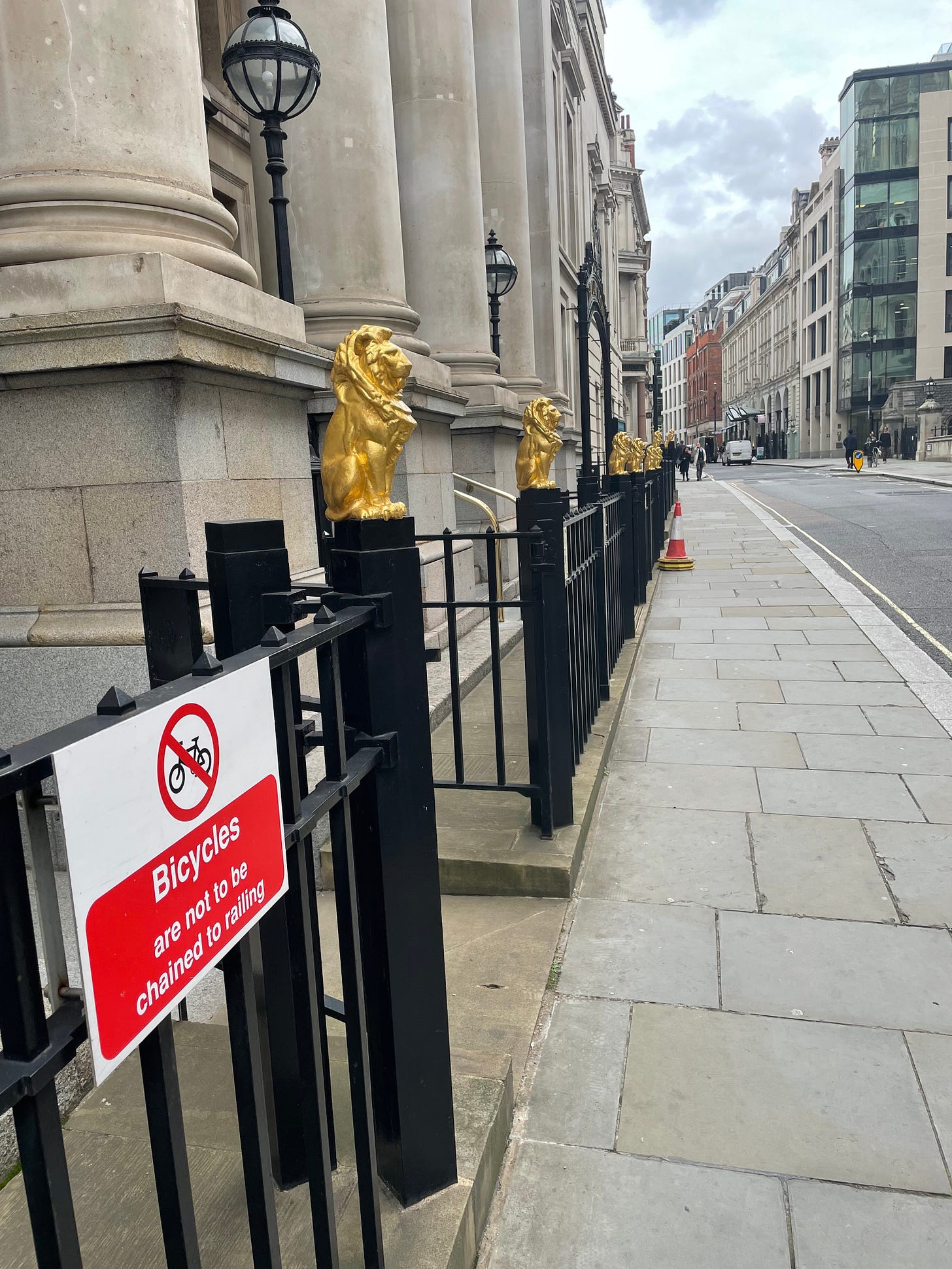
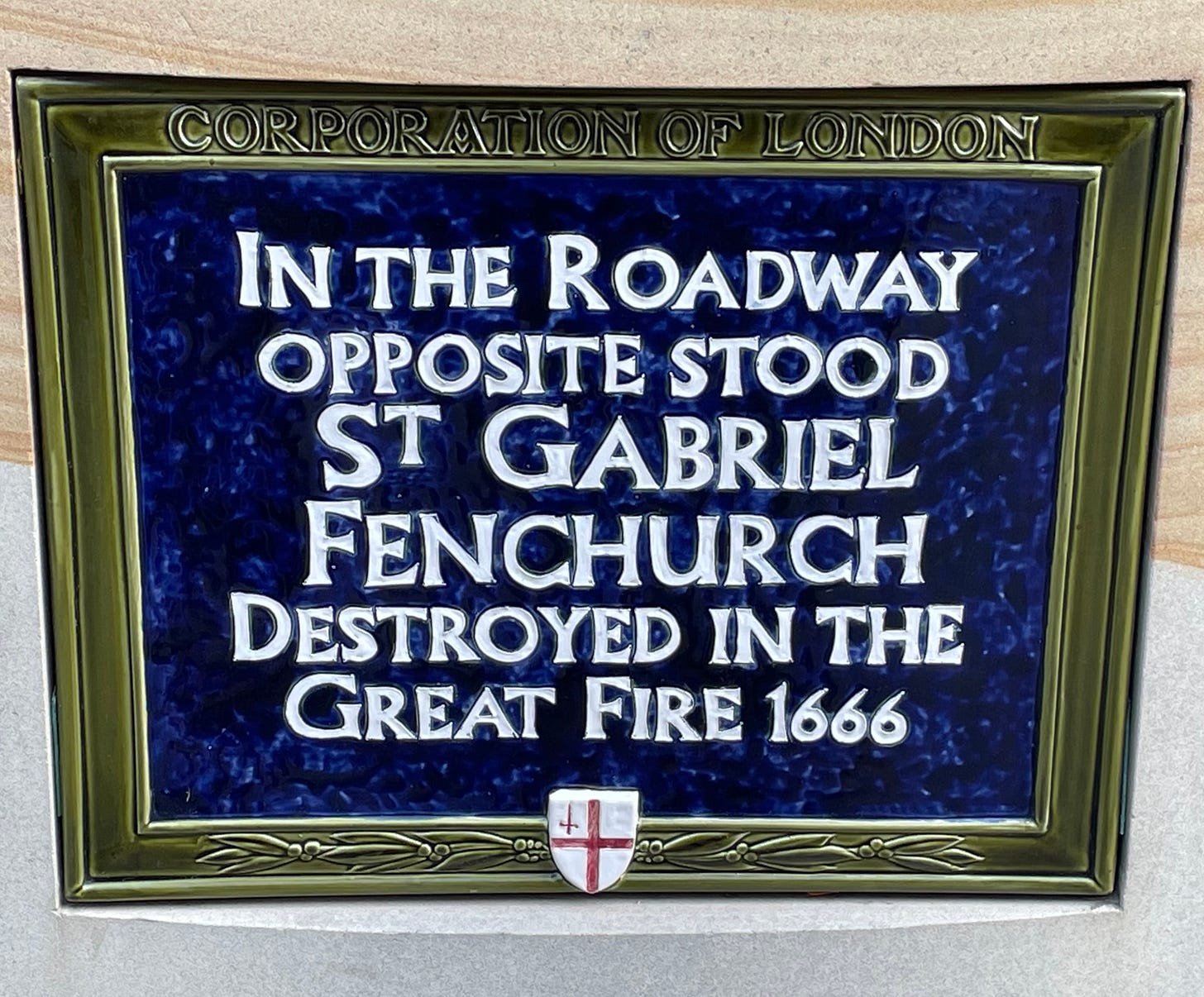
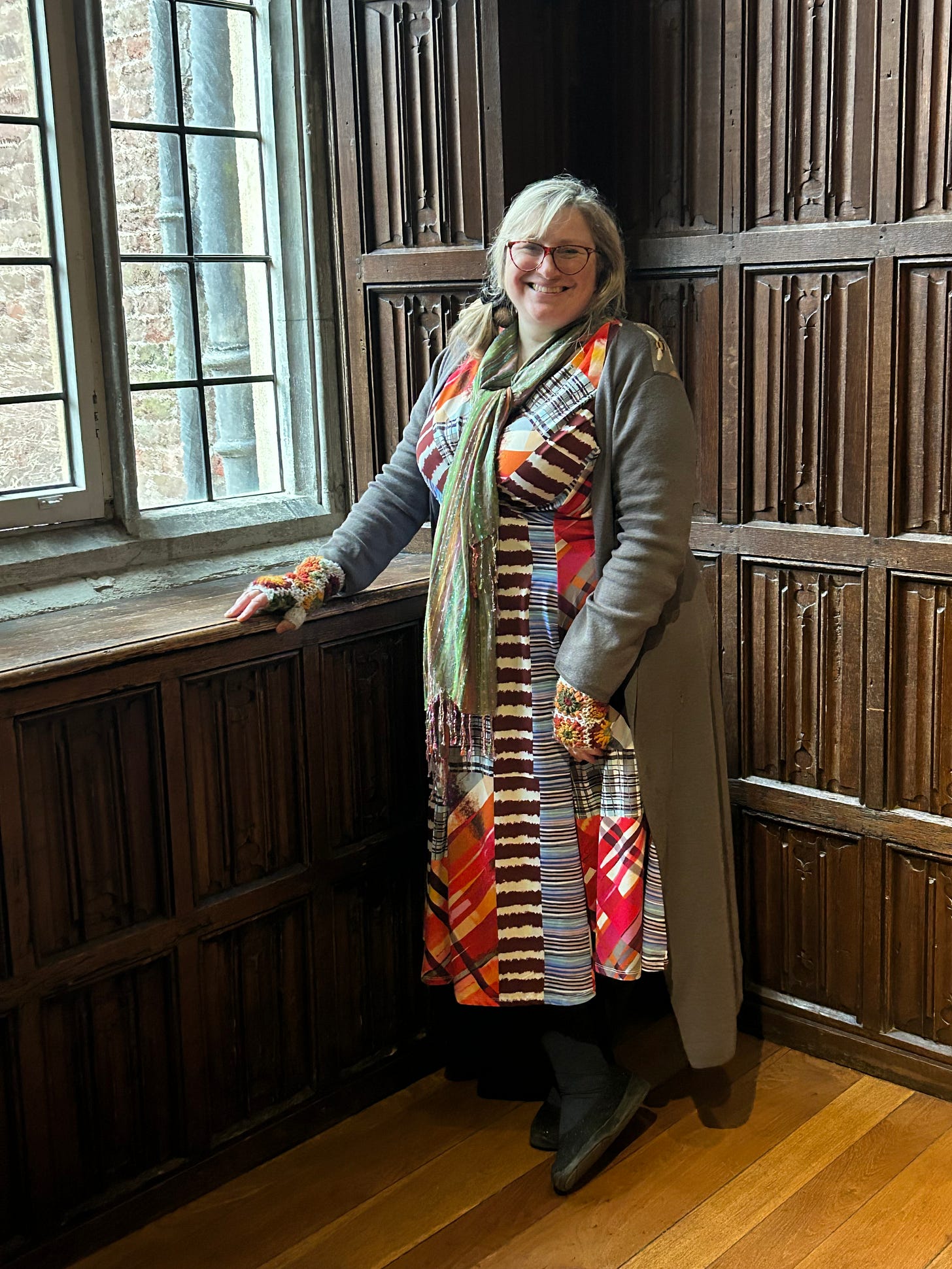
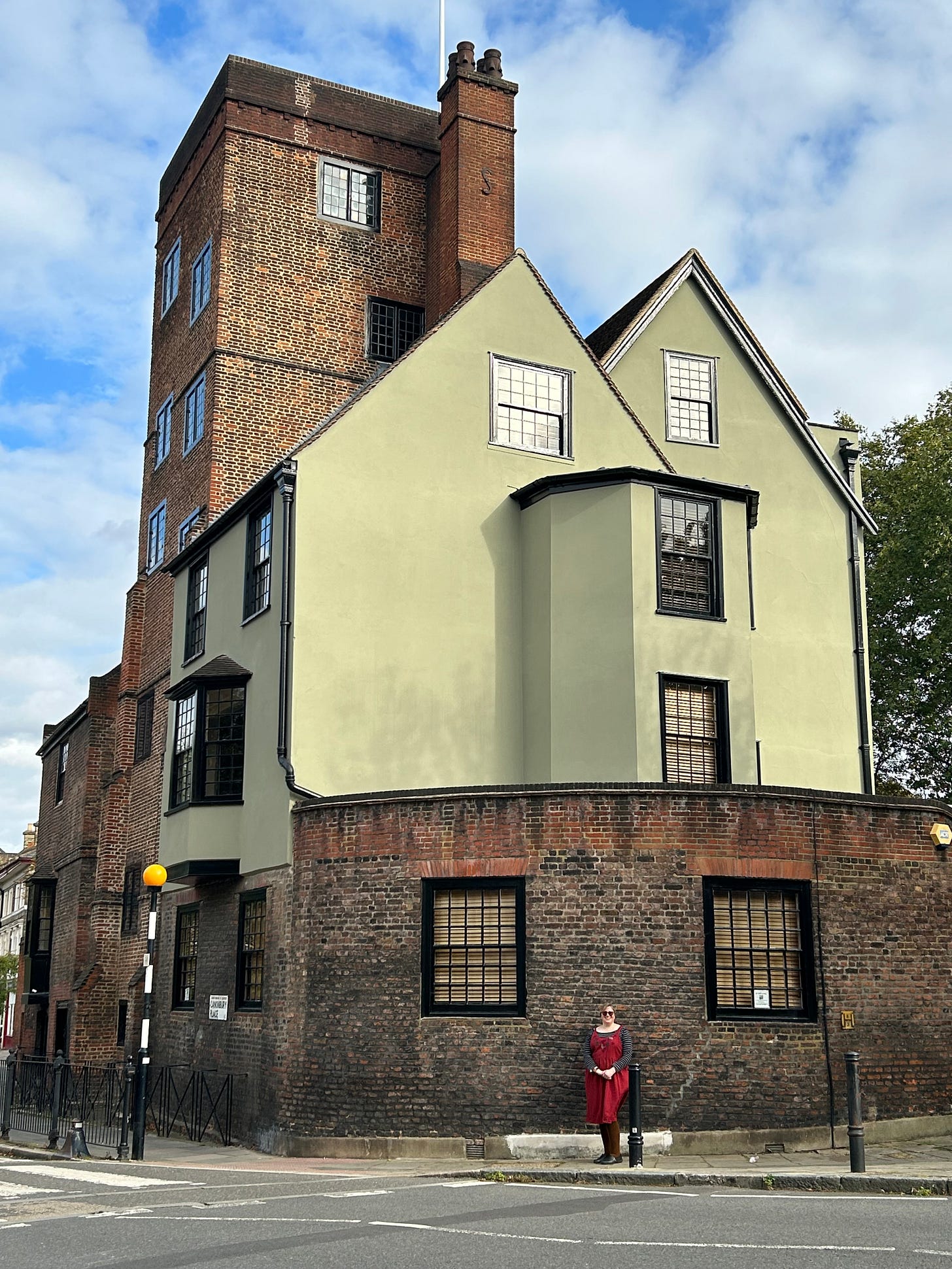
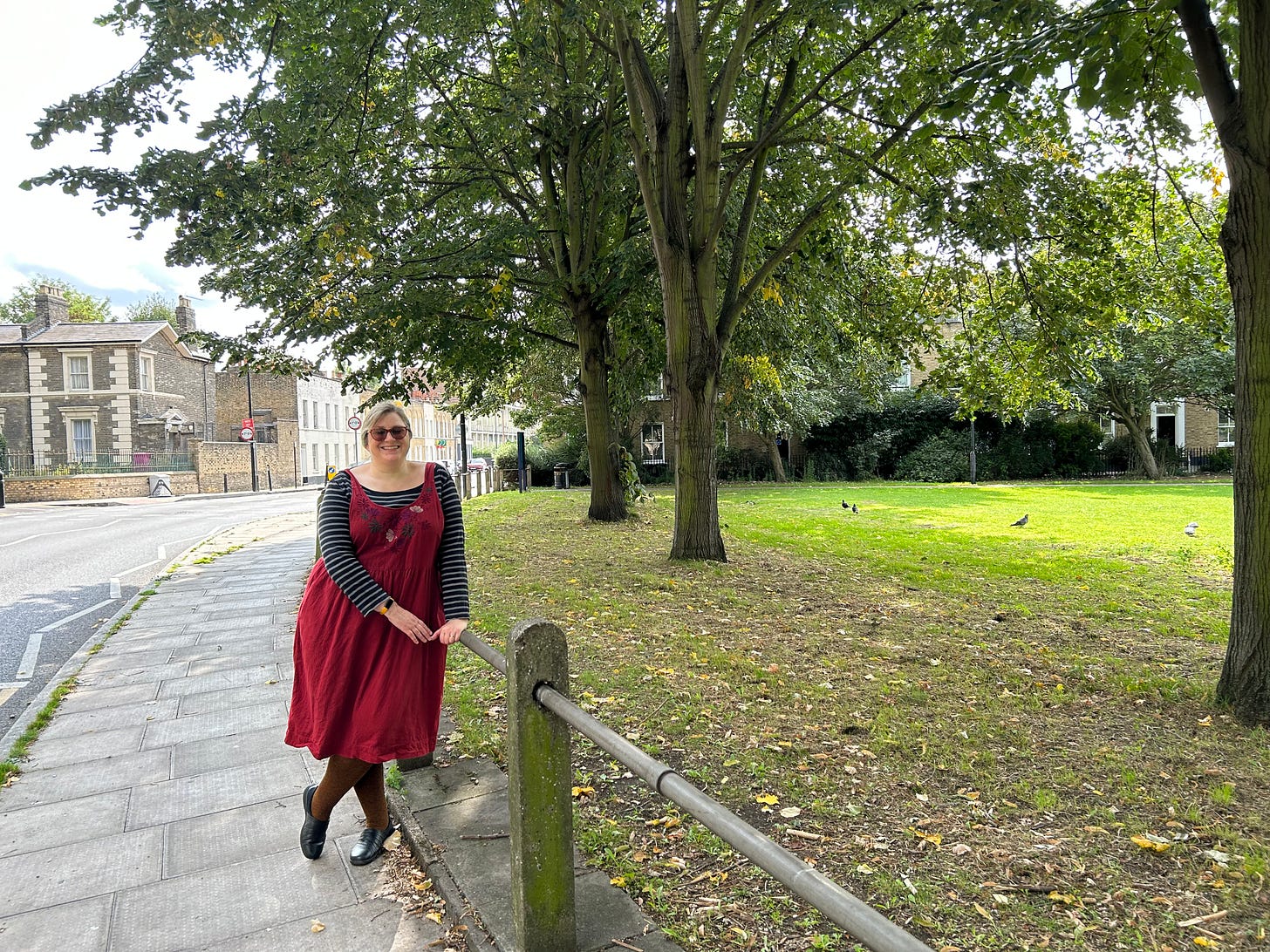
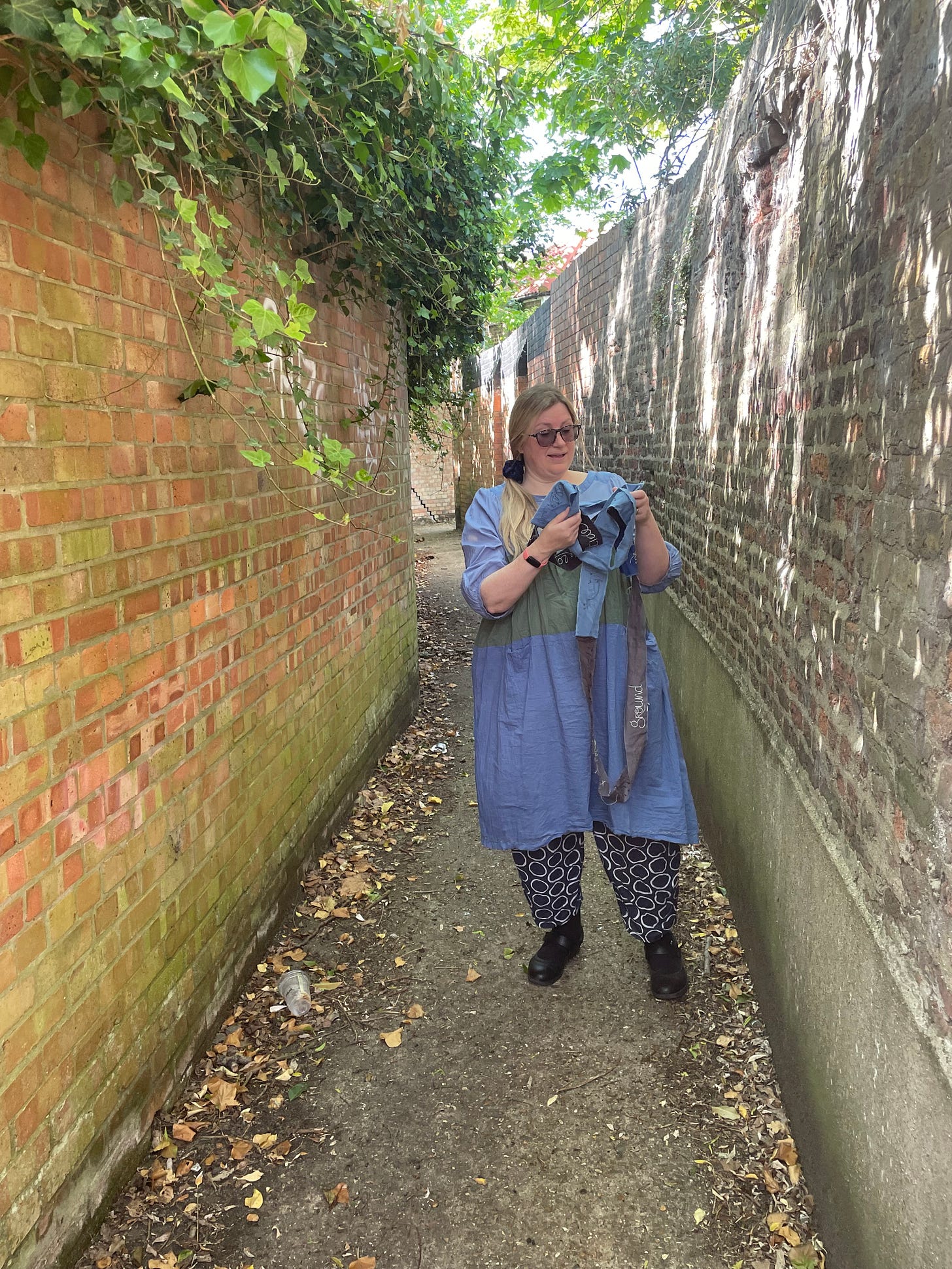
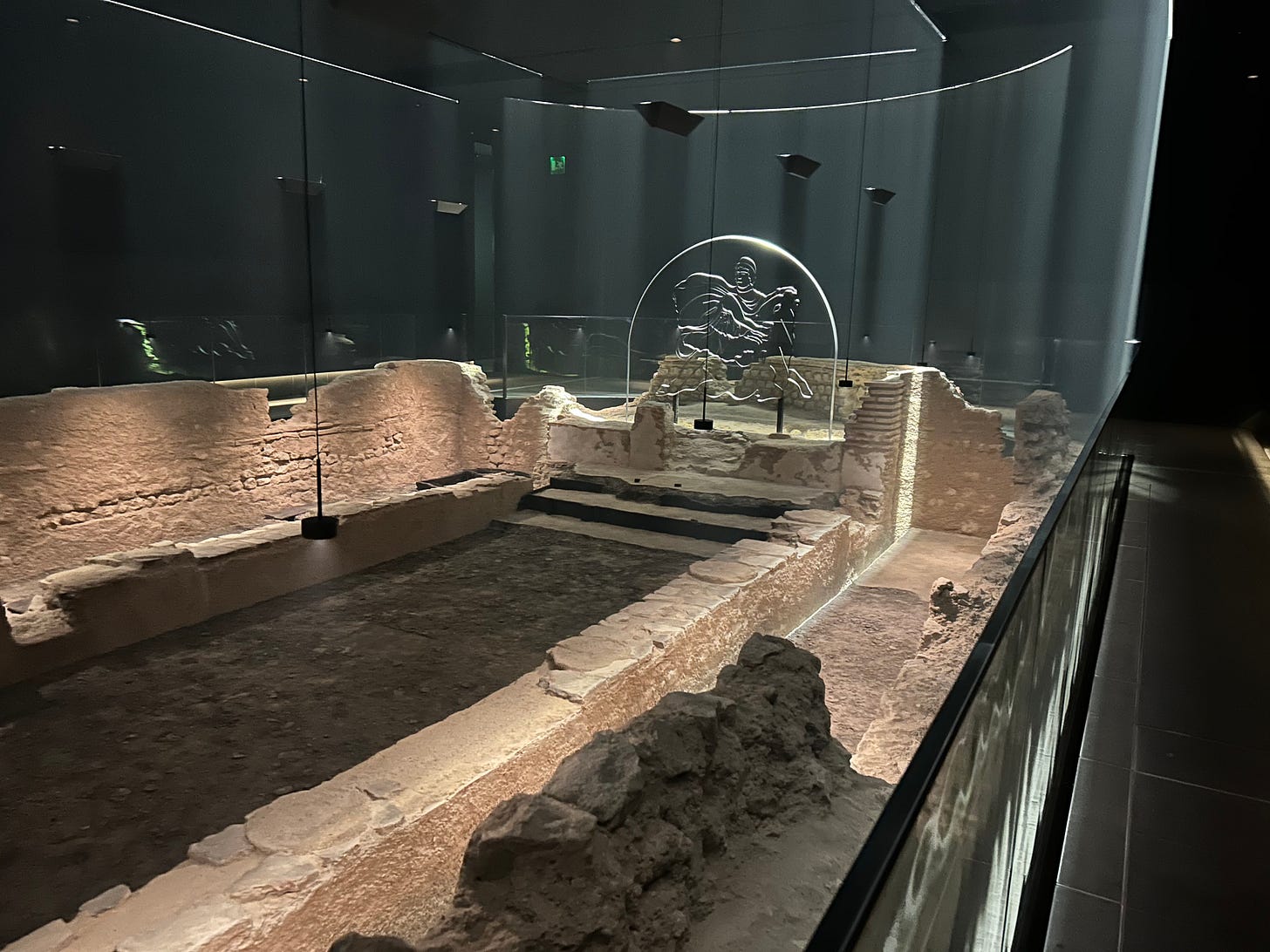
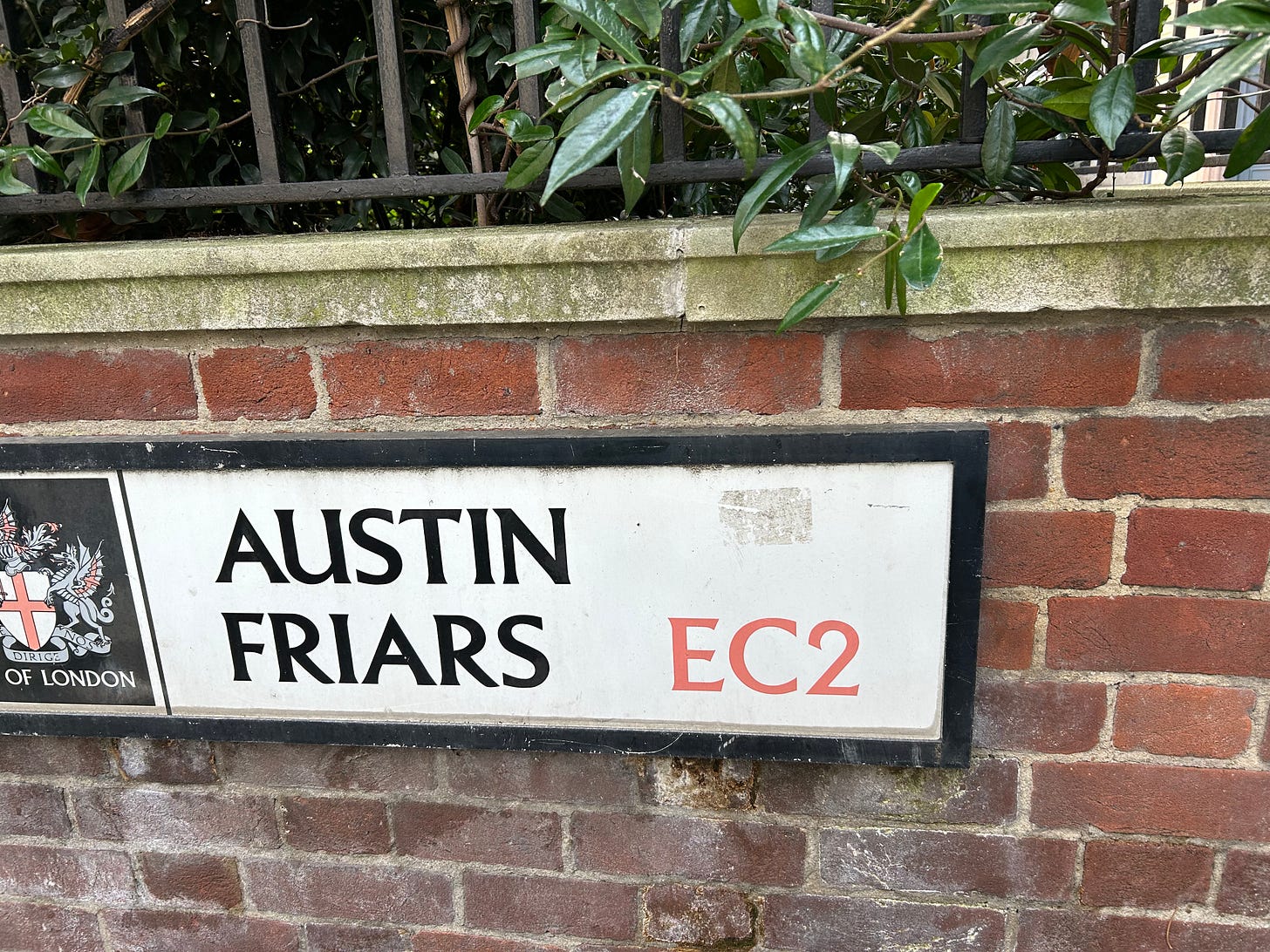
I love this! As a Victorianist, my version of Cromwelling is Dickensing. The first time I ever went to London was after my first year teaching at Penn. I thought I would spend my days at the British Library sedately working on my book. Instead I found myself absolutely overcome by a sense that everywhere I looked I was seeing streets and places and names of things that conjured Dickens. I wound up spending the entire two weeks that I was there walking central London, back-and-forth and up and down and round and round, day and night, rookeries and graveyards and pubs and parks and palaces and canals and inns of court, eventually getting it more or less by heart. It was amazing. I rationalized it by thinking that Dickens himself thought by walking and learned by walking and figured out much of his work by walking.
So much in this post, I don't know where to start.... obviously with "Croydon????" I suppose.